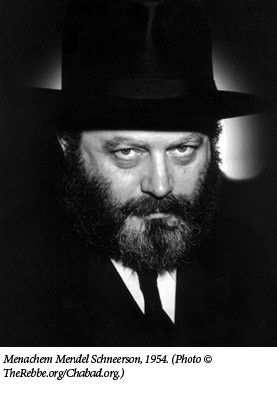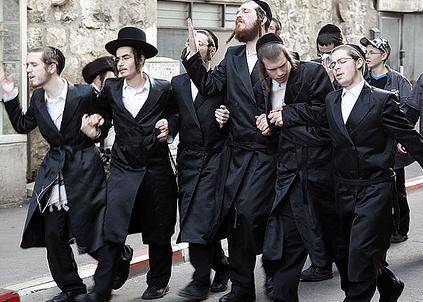Forward columnist J. J. Goldberg is distinguished among Jewish writers for acknowledging that yes, Jews are indeed powerful. The basic message of his 1996 book, Jewish Power: Inside the American Jewish Establishment, was that American Judaism is well organized and lavishly funded. It has achieved a great deal of power, and it has been successful in achieving its interests.
Goldberg’s book is a good rejoinder to those who claim that the Jewish community is hopelessly divided on all issues and therefore doesn’t have any net effect on public policy. His book acknowledged that in fact there is a great deal of consensus on broad Jewish issues, particularly in the areas of Israel and the welfare of other foreign Jewries, immigration and refugee policy, church-state separation, abortion rights, and civil liberties. As I noted in CofC, the massive changes in public policy on these issues beginning with the counter-cultural revolution of the 1960s coincide with the period of increasing Jewish power and influence in the United States.
Goldberg tackled Jewish power again in a recent Forward column, “Purim’s Lessons About Diaspora Power.” Again the point is that Jews are certainly not the weak, beset group typically presented by activist organizations like the ADL. He notes that since WWII, Jewish power increased while the enemies of Jews “declined in numbers and influence.” However, he sees a fundamental change:
Today, quite unexpectedly, we’re back where we started. Diaspora Jews still have resources to protect their interests and values, as they’ve had since World War II. But Jewish communities also face mounting threats from real enemies once again, thanks to the combined effects of the September 11 attacks, the Al-Aqsa Intifada and the Iraq War. Anti-Israel and anti-Jewish activists and ideologues have taken to claiming with unaccustomed boldness that organized Jewry controls and undermines whole governments and industries. Israel’s sworn enemies are broadening their focus and taking aim — with words and sometimes with bombs — at Israel’s closest overseas ally, the Jewish community. Perhaps most important, verbal attacks on organized American Jewish activity are no longer taboo. Diaspora Jewry hasn’t lost legitimacy, but its enemies have regained theirs.
Israel and Diaspora Jewish communities are indeed being criticized as never before. Right now, there is Israeli Apartheid Week aimed at boycotts, demonstrations, and divestment from Israel. At this point, you would have to be living under a rock to be unaware of the iron grip that the Israel Lobby has on US foreign policy and at its role in fomenting the Iraq war.
I would also like to think that people are becoming more willing to openly and honestly discuss Jewish influence in the other areas mentioned in Goldberg’s 1996 book, especially on immigration policy and other areas related to multiculturalism. That is certainly what we at TOO are trying to do.
Goldberg makes two remarkable recommendations:
First, remember that [in the Purim story] Haman plotted to destroy the Jews because Mordecai insulted him. Sometimes your enemies hate you because of something you did, not just who you are. Sometimes a small concession now can save a lot of grief later.
Wouldn’t it be great if people like Abe Foxman, Heidi Beirich, and Mark Potok took that to heart? — that some criticisms of Jews are not just “canards” based on ancient prejudices but reflect real conflicts of interest in the contemporary world. But of course, it’s unrealistic. The organized Jewish community cannot acknowledge Jewish involvement in promoting the Iraq war any more than it can acknowledge its role in promoting and financing immigration and multiculturalism into Western societies. The changes unleashed by Jewish influence in America have been profound–literally transformational. Taking any responsibility would be dangerous indeed for Jews, especially as we see that American politics is increasing defined by racial identity.
Further, especially in Israel, Jewish behavior is on “feed forward” in the sense that the most committed Jews are in determining the direction of policy. It’s always been that way, and in the contemporary world, this means that the fundamentalists, the settlers, and the overtly racialist Zionists are in the driver’s seat, dominating the most right wing government in Israeli history. The result is that Israeli expansionism, apartheid, and the oppression of the Palestinians will not be halted as a result of pressures within the Jewish community. The American Jewish community will continue to support all this — despite the glaring hypocrisy such behavior implies given the role of Jews as a pillar of multiculturalism in the Diaspora. There will be no concessions.
As a result, the ADL’s policy of condemning any discussion of Jewish influence will doubtless continue. Reasonable criticism must be completely suppressed because any leak in the dike is likely to lead to a deluge. And yet, as Goldberg seems to be admitting, Jewish influence can’t be ignored forever. I think he’s probably right. At least, I hope so.
Goldberg’s second bit of advice is: “Don’t abandon your intermarried relatives. They might save your life some day.” In other words, there is likely to be an anti-Jewish backlash at some point, and Jews had better be prepared. It’s an interesting suggestion to look to intermarried Jews for help. Goldberg’s implicit theory is that blood ties are critical in the end, and I couldn’t agree with him more.
Although intermarriage is often condemned in the Jewish community and there are high profile programs like Birthright Israel aimed at reducing it, several Jewish theorists have pointed out that intermarriage has certain strategic benefits for Judaism. Chapter 9 of Separation and Its Discontents has the following quote from two Jewish scholars of the Diaspora:
The successful exercise of influence is best achieved in a community with a large subset of members interacting with politicians and opinion leaders. Through intermarried Jews themselves, and certainly through their social networks involving Jewish family and friends who may be closer to the core of the community, Jewish concerns, interests, and sensibilities can be articulated before a wider, more influential audience. In a recent interview, Presidential aide Robert Lipshutz traced the origin of Jimmy Carter’s concern for Israel to his close friendship with a first cousin, an Orthodox Jew (Carter’s aunt married a Jewish man, and their two children were raised as Jews). Intermarrying Jews, while perhaps diluting the community in one sense, perform compensating strategic functions in another. (Lieberman and Weinfeld, Demographic trends and Jewish survival. Midstream 24 (November), 1978, 16.)
Goldberg’s comment agrees with my conclusion:
The deepest layers of Jewish commitment [i.e., Orthodox, Conservative and other strongly ethnic forms of Judaism] constitute the long-term well spring of Judaism, with the outer layers acting as mere temporary appendages that will be cast off in the long run. This deep inner layer of very intense group commitment provides demographic vigor to replenish those in the outer layers [i.e., they’re the ones having the babies] who are gradually moving away from Judaism while nevertheless performing political and social roles that are indispensable for the contemporary vitality of Judaism. Such a perspective essentially agrees with the views of political scientist Michael Walzer (1994, 5), who notes that without radical transformation, secular Judaism cannot reproduce itself; since the Enlightenment, “it [has] remained parasitic on an older religious Judaism that it didn’t and couldn’t pass on.”







